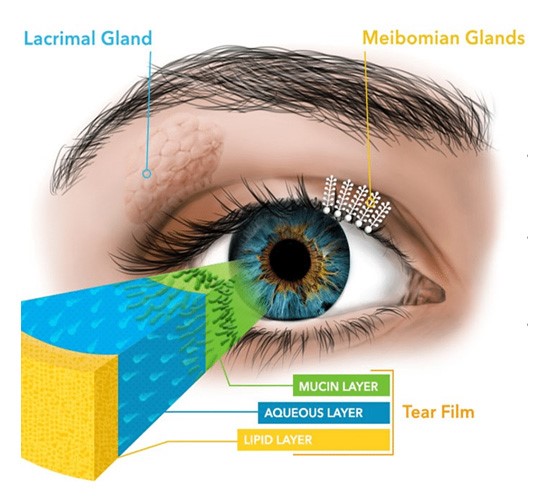About
The ocular surface includes the cornea (the clear front of the eye) and the conjunctiva (that covers the white part of the eye and the inner eyelids). It protects the eye and facilitates sight by refracting and transmitting light. We study the formation and function of the ocular surface, and how different disorders affect it.

Research Area
Ocular Surface Biology Laboratory
CURRENT Research Interests
i. Ocular Surface Functions of KLF4 and KLF5: The adult corneal epithelium (CE) is continually renewed throughout life. The most superficial cells lost by desquamation are replaced by the underlying cells derived from the basal cells which differentiate as they migrate upwards, and in turn are replaced by the peripheral limbal stem cell-derived transient amplifying cells that migrate centripetally. We are interested in understanding the functions of Krüppel-like factors KLF4 and KLF5 that are among the most abundant transcription factors in the adult mouse cornea, in this process. As germline ablation of Klf4 or Klf5 results in premature lethality before mature cornea is formed, we resorted to Cre-Lox-mediated conditional ablation of Klf4 or Klf5 in the ocular surface from embryonic day-9 to study their role in CE maturation, or specifically within the normally formed adult CE in a spatiotemporally regulated manner to study their role in homeostasis. Our studies revealed that KLF4 and KLF5 have profound influence on the ocular surface by regulating CE cell proliferation, differentiation, structural stability, and barrier function, and conjunctival goblet cell formation. We are pursuing this work further to understand the molecular basis for diverse functions of KLF4 and KLF5 in maturation and maintenance of the ocular surface.
This research is supported by NIH RO1 EY 026533 (PI: Swamynathan)
ii. Ocular Surface Functions of SLURP1: We are also investigating the ocular surface functions of the secreted Ly6/uPAR-related protein-1 (SLURP1), mutations in which cause palmoplantar hyperkeratotic disorder Mal-de-Meleda. Slurp1 is one of the most abundantly expressed peptides in the mouse cornea and is secreted into the tear film. Our work demonstrated that Slurp1 is an anti-angiogenic immunomodulatory peptide that suppresses inflammation in healthy corneas. Under proinflammatory conditions, its expression decreases allowing helpful inflammation to proceed. We also discovered that Slurp1 serves this role by scavenging urokinase (uPA), suppressing TGF-b signaling and retaining the transcription factor NFkB in the cytoplasm. We are pursuing this work further to determine the value of SLURP1 as a target for developing novel therapeutic approaches for managing inflammatory disorders of the ocular surface.
This research is supported by NIH RO1 EY 031684 (PI: Swamynathan)
iii. Role of Polarity in Ocular Epithelium: Epithelial cells that line the body's outer surface and internal organs are polarized, with well-defined basal and apical sides. Within the eye, corneal epithelium (CE) and retinal pigmented epithelium (RPE) are two such specialized epithelia that play essential roles in ensuring proper vision. We are studying the role of Pard3, a tight junction component and a key determinant of epithelial apicobasal polarity (ABP) in these tissues.
This research is supported by Startup Funds from the Department of Ophthalmology, Morsani College of Medicine, University of South Florida, Tampa, FL. (PI: Swamynathan)
